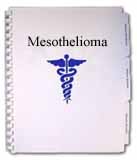Lung Cancer Symptoms
- A cough that doesn't go away and gets worse over time
- Constant chest pain
- Fluid in lungs, fluid around lungs
- Coughing up blood
- Shortness of breath, wheezing, or hoarseness
- Repeated problems with pneumonia or bronchitis
- Swelling of the neck and face
- Loss of appetite or weight loss
- Fatigue
These lung cancer symptoms like fluid in the lungs may be caused by lung cancer or by other conditions. It is important to check with a doctor.
To help find the cause of lung cancer symptoms, the doctor evaluates a person's medical history, smoking history, exposure to environmental and occupational substances such as asbestos, and family history of cancer. The doctor also performs a physical exam and may order a chest x-ray and other tests. If lung cancer is suspected, sputum cytology (the microscopic examination of cells obtained from a deep-cough sample of mucus in the lungs) is a simple test that may be useful in detecting lung cancer. To confirm the presence of lung cancer, the doctor must examine tissue from the lung. The removal of a small sample of tissue for examination under a microscope by a pathologist can show whether a person has lung cancer. A number of procedures may be used to obtain this tissue:
- Bronchoscopy The doctor puts a bronchoscope (a thin, lighted tube) into the mouth or nose and down through the windpipe to look into the breathing passages. Through this tube, the doctor can collect cells or small samples of tissue.
- Needle aspiration A needle is inserted through the chest into the lung cancer tumor to remove a sample of tissue.
- Thoracentesis Using a needle, the doctor removes a sample of the fluid that surrounds the lungs to check for cancer cells.
- Thoracoscopy Surgery to open the chest is sometimes needed to diagnose lung cancer. This procedure is a major operation performed in a hospital.

